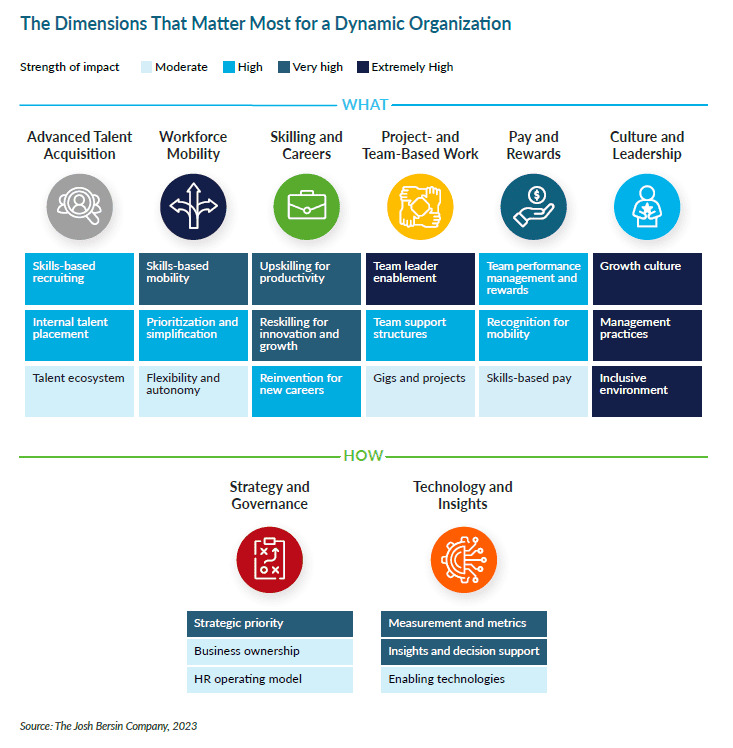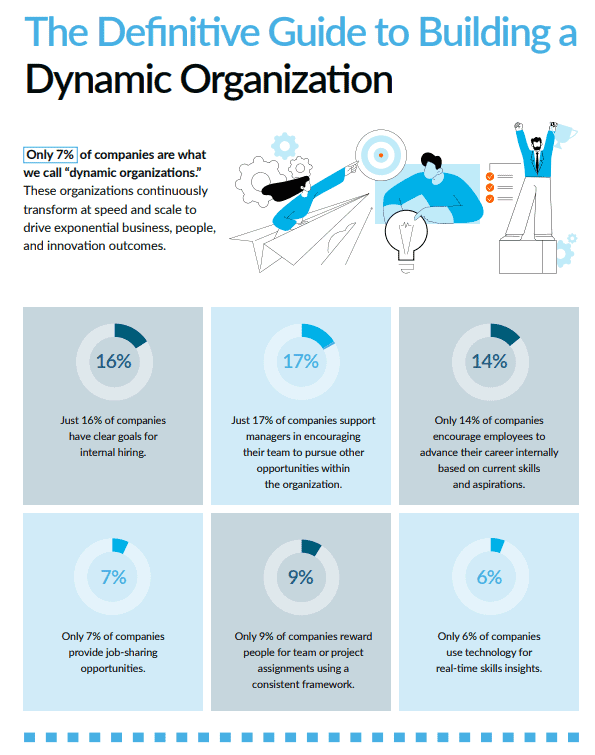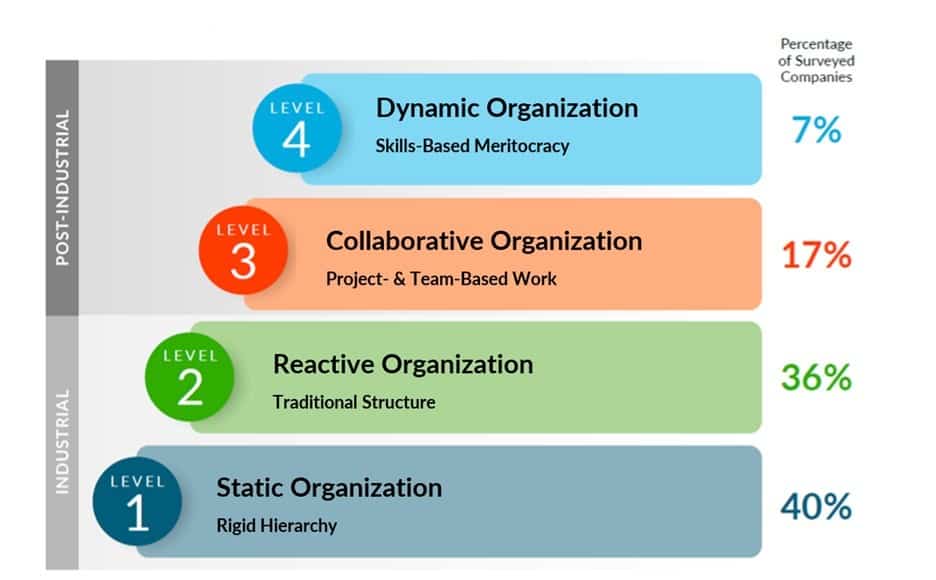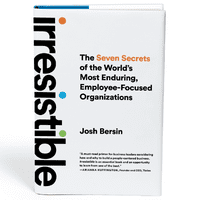Why Are Some Companies More Dynamic Than Others?
Every day we read about an iconic company that’s falling behind. This year it’s Disney, Nike, and Nokia, but over the years we’ve seen hundreds of innovators fail to adapt to change. I remember when Digital Equipment eclipsed IBM, only later to fall into disrepair and be acquired by Compaq, who was then acquired by HP.
Most of the business analysts blame these companies for “failing to innovate,” and many of their stories talk about missing a wave of technology, missing a change in consumer trends, or simply making a bad bet on a change in the market. The new movie “Blackberry” shows a team of pioneers simply too enamored with their chicklet keyboard to realize that Apple had reinvented their space.
Well, despite books like The Innovators Dilemma and thousands of others that talk about the process of innovation, our new research points to something different: management.
Companies who fall behind in their market have not “suddenly become stupid” or “made a bad bet.” They have built organizations that are “static” in structure and rewards, missing out on the most important issue in business: change. And while we all want our organizations to execute and grow, we have to accept that “being good at change” is actually the most important (and difficult) issue in business.
The Dynamic Organization
We just completed a year-long look at human resources, management, and operating models in companies with the simple hypothesis that companies with a large amount of internal mobility (moving people around inside the company) might outperform those who hold staff in functional silos and fail to invest in cross training and multi-disciplinary employee development.
Well the research found a surprising result. Among the 1000+ companies who participated in this study, we found that the highest performing companies are simply “dynamic by design.” Their leadership and operational practices focus on listening to employees, regularly moving people around, and organizing their people into cross-functional teams. They rotate senior leadership around the company, they invest heavily in training and development, and they reward people not only on execution, relying an what we call a “meritocracy of skills.”
These high performers, which we call Pacesetters, are seven-times more likely to be “leaders in their market,” they have 31-times higher employee retention and engagement scores, they are 20X more inclusive in their hiring, and score 20X higher in workforce productivity. These extraordinarily high differentiators are some of the biggest numbers we’ve seen, leading our team to come to the conclusion that these high-performing companies are simply “dynamic by design.”
And this is much more complex than simply embracing the idea of “growth mindset” or building skunk works and investing in R&D. For many years business schools taught CEOs to build “innovation at the edge” and even create small business units that try to disrupt the mother ship. These small innovation units were supposed to have the freedom to create and reinvent, then proving to the core business what needed to change.
Well this old idea simply no longer works. Microsoft’s large and well staffed R&D department failed to invent an AI that worked, forcing the company to invest tens of billions into its new partner Open AI. IBM Research, the group that virtually invented the operating system that powers most banks, has not been able to turn Watson into a winner, and such stories go on and on. Today, as industries, consumer demand, and technology changes faster than ever, we need our companies to come up with new ideas, test and adopt them, and constantly refine our products at the front line and throughout the supply chain.
I was fascinated by Elon Musk’s practice of “reductionism” discussed in the Walter Isaacson’s book. Despite Elon’s various quirks and rough nature, he constantly goes into his businesses and finds hundreds of places to reduce cost, eliminate complexity, and reinvent and recreate. He is, in a rather disruptive way, telling every engineer and manager to “never sit still” and always go back to basic principles and see how you can do your job better. (And he moves people around, focusing on the most highly skilled people, to do it.)
This kind of continuous innovation does not happen by simply telling people to do it. It requires a “dynamic operating system” in your company, fueled by management and reward systems that liberate, empower, and train people to come up with new ideas in every group. Yes, we still need R&D teams to build new, long-term products and services. But often these big groups fall into group-think and distance from customers. Much of the innovation in dynamic organizations comes from the front line.
In the 1980s, when I worked for IBM, I used to visit R&D facilities with our customers. These meetings were usually filled with senior engineers and research leaders “telling the customers” what was coming down the pipe. My customer, which was an innovative organization itself (the University of California) would often interrupt the presenter and tell them about some new technology (TCP/IP for example) they believed was more important. More times than not the IBM exec would politely listen and then dismiss my customer’s comments because they were too “wacky” or “academic.”
Well IBM lost its entire computer networking business to Cisco, it lost much of its PC and minicomputer business to Sun and Dell, and later discovered that much of its software products were not innovative enough to adapt. This forced the company to pivot into the consulting business, and IBM’s growth rate has never recovered.
What Do Dynamic Companies Do?
It’s easy to tell stories, but when you look at the data you see what’s under the covers. As difficult as it is to generalize, we did uncover a “recipe” and set of best practices. The details are discussed in our new research “The Dynamic Organization” but let me give you a few here.
 |
There are three big things that matter:
- First, empowering teams (front-line and internal) to come up with new ideas, bring them forward, and implement them. And that means operating in teams, not a hierarchy.
- Second, building skills and capabilities everywhere, so employees feel confident about new technologies and business processes in the company. And that means we let people reinvent themselves.
- Third, building reward and cultural support around a “skills meritocracy,” so people with strong skills and new ideas are rewarded. And that means listening to the crazies!
This all sounds kind of easy to understand, but it’s enormously difficult to do.
In practice these Dynamic Organizations free up resources to work on new ideas, they listen to input from hundreds of front-line employees, and the reorganize on a regular basis. The process of internal mobility, which we set out to study in the beginning, is actually the “lubricant” or “fuel” that makes this work. People with skills in one group bring their ideas to people in other groups, forcing “experts” to reconsider their dogma and learn new ways to solve problems.
 |
Interestingly enough, the industries that are most Dynamic are those dealing with the most customer change: healthcare, consumer products, and professional services. Companies in pharmaceuticals, media and entertainment, and technology are far less sophisticated at these practices. So even if your company is performing well now, I encourage you to look at this research so you can stay ahead in the future.
 |
My final point comes down to leadership. When you look at how the dynamic companies operate, they have a marvelous culture of embracing new ideas, listening to others, and moving people around to learn. This comes from leadership. Dynamic companies promote leaders who practice these principles, not just people who “hit the numbers.” They move leaders around, and they often promote young leaders early in their careers.
 When I wrote my book Irresistible, I titled it “the seven secrets of the world’s most enduring and employee-focused organizations” for a reason. I always believed that endurance, the ability to adapt to change, is by far the most important characteristic of a high-performing company. Well this research, which follows many of the principles in the book, shows you precisely how to put this into action.
When I wrote my book Irresistible, I titled it “the seven secrets of the world’s most enduring and employee-focused organizations” for a reason. I always believed that endurance, the ability to adapt to change, is by far the most important characteristic of a high-performing company. Well this research, which follows many of the principles in the book, shows you precisely how to put this into action.
You can download the executive overview here. I encourage you to join our Corporate Membership Program to get all the details: we believe this research will help you as an HR or business leader build a case for change in a very pragmatic way.
In today’s world of accelerating change, every company has to learn how to be more Dynamic, and still focus on execution and profit at the same time.
I welcome your feedback and comments and hope to hear from each of you directly.

Additional Information
Welcome To The Post-Industrial Age: Why AI Is Here To Save Us
The Definitive Guide To Building A Dynamic Organization – new research and infographic to download
Building the Dynamic Organization: Critical for the Post-Industrial Era – article by Kathi Enderes
